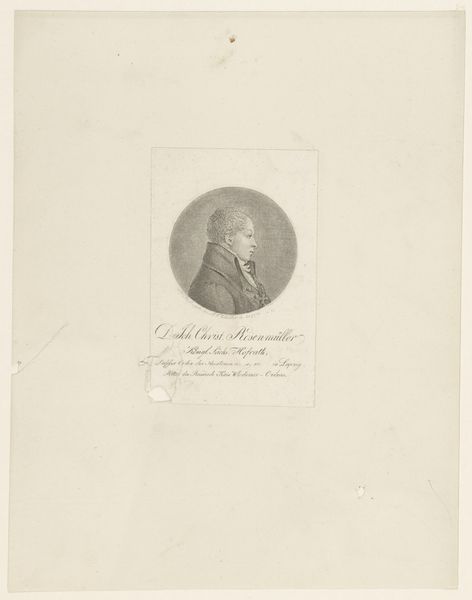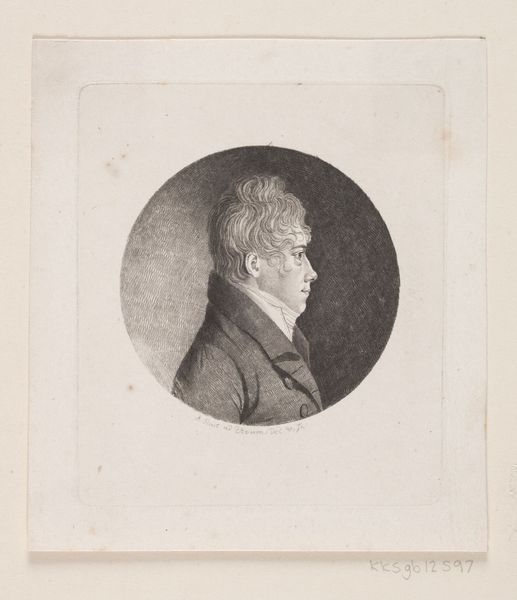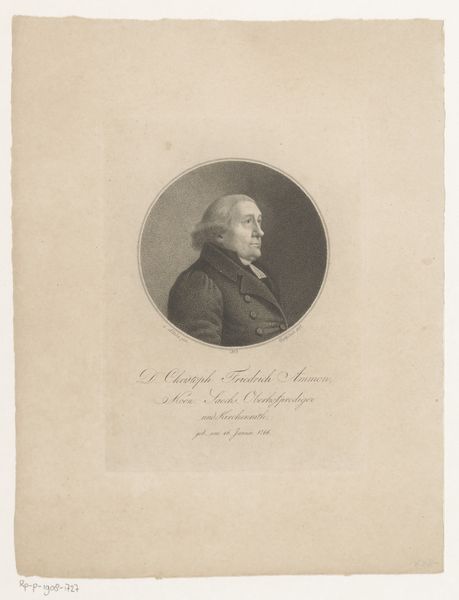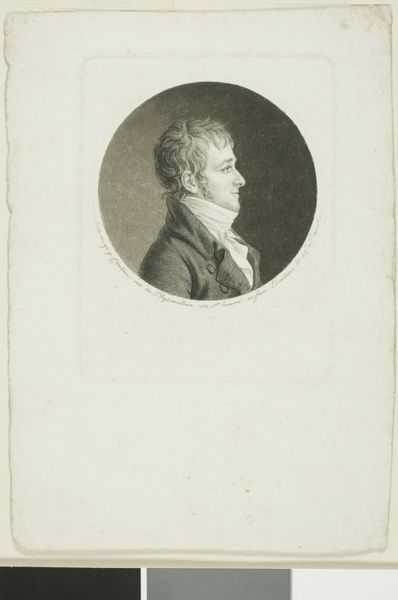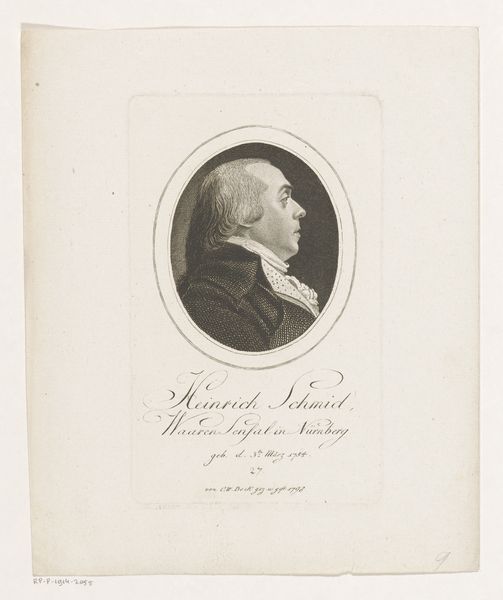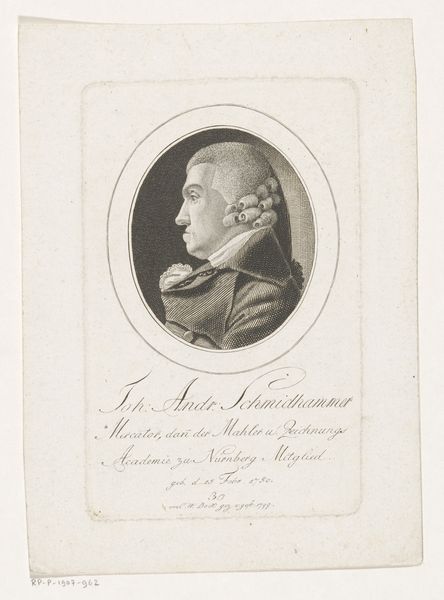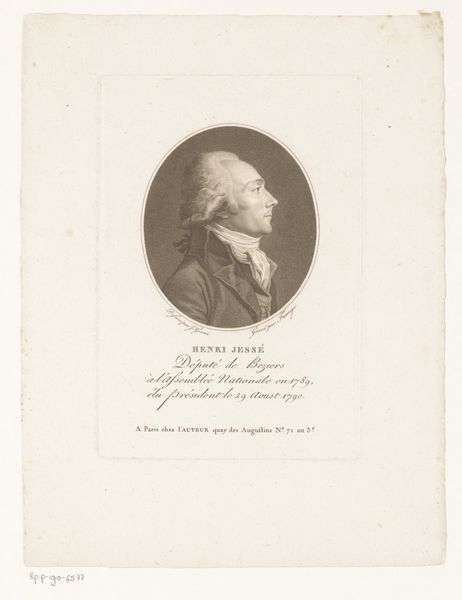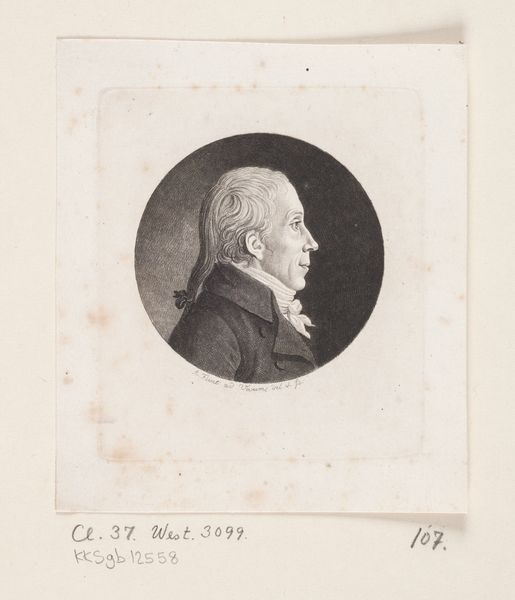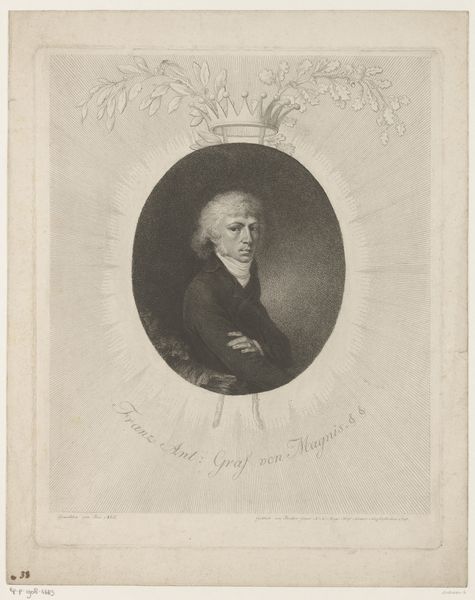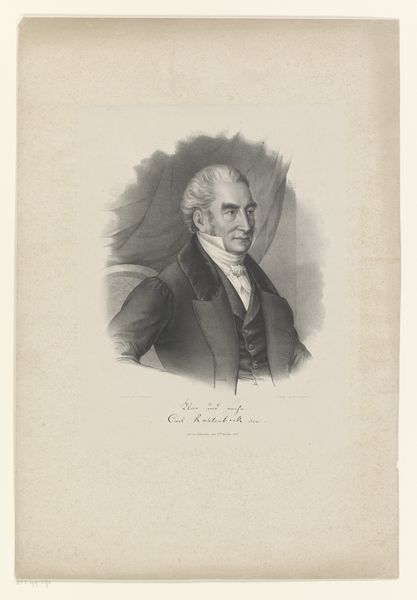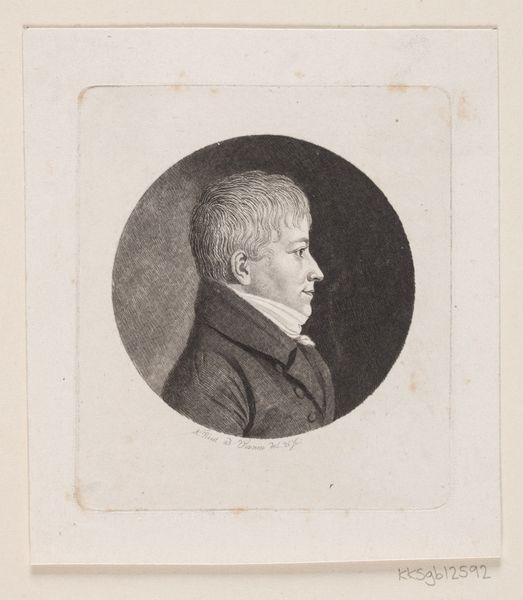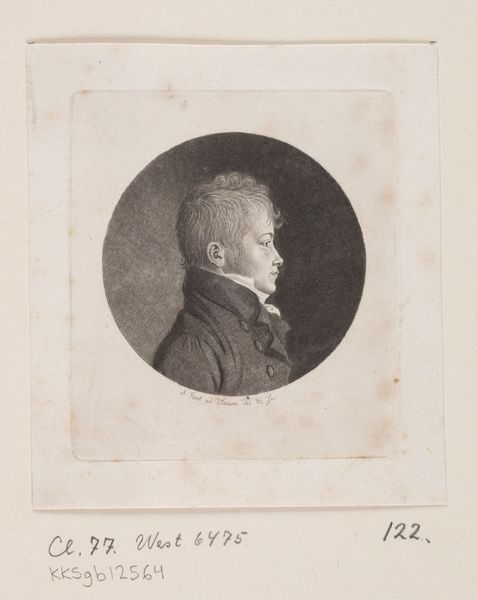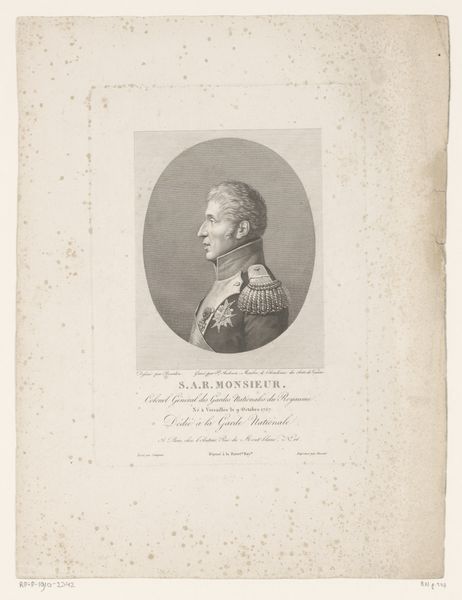
Dimensions: height 195 mm, width 133 mm
Copyright: Rijks Museum: Open Domain
Editor: So, this is “Portrait of Johann von Zuccarini,” an engraving dating back to 1808, and the artist is Christoph-Wilhelm Bock. What immediately grabs me is how formal it feels. He’s presented almost like a Roman emperor, very stoic and proper. What do you make of this, especially knowing its historical context? Curator: Oh, that's interesting that it evoked that for you. Yes, formality absolutely dances through this. Given that it's 1808, the Neoclassical style, with its love for order and idealized forms, certainly has a hand in the portrayal. Do you feel like that rigid, almost sculptural quality amplifies any aspect of his character, real or imagined? For me, he is giving us a snapshot of unwavering resolve. Editor: That resolve…yes! I didn’t think of it quite that way, but I see it. The clean lines definitely contribute to that sense of strength. Is it the artistry, or is there something about the sitter that conveys the strong personality? Curator: Hmm, perhaps a delightful, symbiotic fusion. Bock probably chose the Neoclassical style because it resonated with Zuccarini’s public image, aligning with his position, as evidenced from the text. Consider how this presentation might affect Zuccarini's public perception – strength, wisdom, good judgment - everything we want in a leader. That said, one can wonder - Was that actually who he was? The world will never know, and that's one of the many curiosities that makes this field of study so exciting. Editor: That’s so true – it’s almost like a carefully constructed PR campaign, even back then! Curator: Precisely. Each stroke a carefully chosen word. Editor: This was really enlightening, thinking about portraits as constructed narratives rather than just likenesses. Curator: Absolutely! Now go forth and interrogate every portrait you see. What stories are *they* trying to tell?
Comments
No comments
Be the first to comment and join the conversation on the ultimate creative platform.

